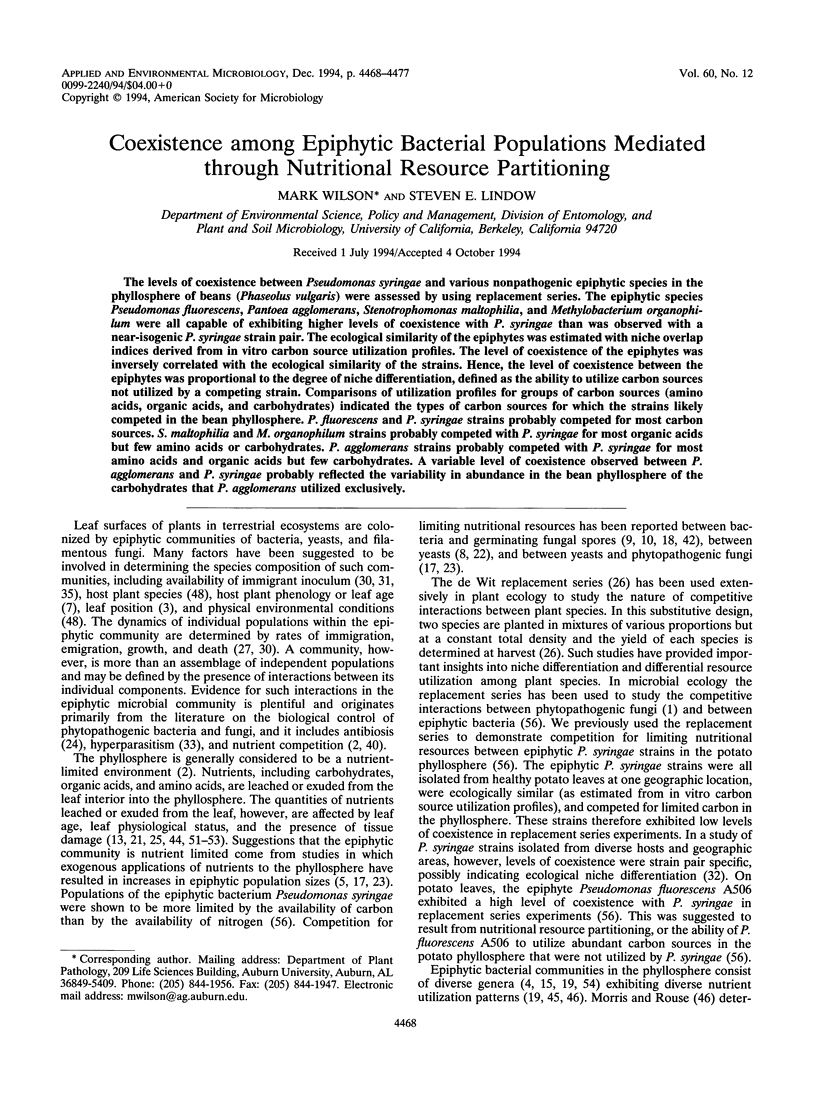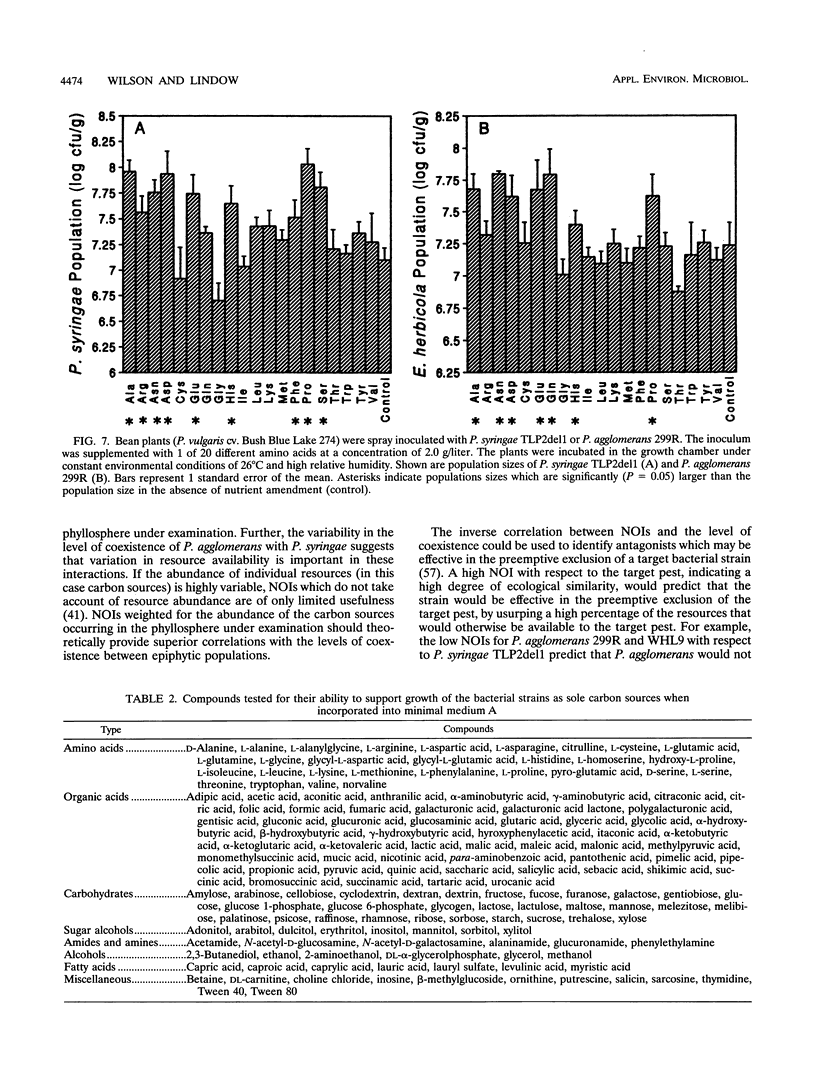Abstract
The levels of coexistence between Pseudomonas syringae and various nonpathogenic epiphytic species in the phyllosphere of beans (Phaseolus vulgaris) were assessed by using replacement series. The epiphytic species Pseudomonas fluorescens, Pantoea agglomerans, Stenotrophomonas maltophilia, and Methylobacterium organophilum were all capable of exhibiting higher levels of coexistence with P. syringae than was observed with a near-isogenic P. syringae strain pair. The ecological similarity of the epiphytes was estimated with niche overlap indices derived from in vitro carbon source utilization profiles. The level of coexistence of the epiphytes was inversely correlated with the ecological similarity of the strains. Hence, the level of coexistence between the epiphytes was proportional to the degree of niche differentiation, defined as the ability to utilize carbon sources not utilized by a competing strain. Comparisons of utilization profiles for groups of carbon sources (amino acids, organic acids, and carbohydrates) indicated the types of carbon sources for which the strains likely competed in the bean phyllosphere. P. fluorescens and P. syringae strains probably competed for most carbon sources. S. maltophilia and M. organophilum strains probably competed with P. syringae for most organic acids but few amino acids or carbohydrates. P. agglomerans strains probably competed with P. syringae for most amino acids and organic acids but few carbohydrates. A variable level of coexistence observed between P. agglomerans and P. syringae probably reflected the variability in abundance in the bean phyllosphere of the carbohydrates that P. agglomerans utilized exclusively.
Full text
PDF









Selected References
These references are in PubMed. This may not be the complete list of references from this article.
- Edwards M. C., Blakeman J. P. An autoradiographic method for determining nutrient competition between leaf epiphytes and plant pathogens. J Microsc. 1984 Feb;133(Pt 2):205–212. doi: 10.1111/j.1365-2818.1984.tb00486.x. [DOI] [PubMed] [Google Scholar]
- KING E. O., WARD M. K., RANEY D. E. Two simple media for the demonstration of pyocyanin and fluorescin. J Lab Clin Med. 1954 Aug;44(2):301–307. [PubMed] [Google Scholar]
- Kinkel L. L., Lindow S. E. Invasion and Exclusion among Coexisting Pseudomonas syringae Strains on Leaves. Appl Environ Microbiol. 1993 Oct;59(10):3447–3454. doi: 10.1128/aem.59.10.3447-3454.1993. [DOI] [PMC free article] [PubMed] [Google Scholar]
- Lindemann J., Upper C. D. Aerial Dispersal of Epiphytic Bacteria over Bean Plants. Appl Environ Microbiol. 1985 Nov;50(5):1229–1232. doi: 10.1128/aem.50.5.1229-1232.1985. [DOI] [PMC free article] [PubMed] [Google Scholar]
- Lindow S. E. Competitive Exclusion of Epiphytic Bacteria by IcePseudomonas syringae Mutants. Appl Environ Microbiol. 1987 Oct;53(10):2520–2527. doi: 10.1128/aem.53.10.2520-2527.1987. [DOI] [PMC free article] [PubMed] [Google Scholar]
- Morgan J. V., Tukey H. B. Characterization of Leachate from Plant Foliage. Plant Physiol. 1964 Jul;39(4):590–593. doi: 10.1104/pp.39.4.590. [DOI] [PMC free article] [PubMed] [Google Scholar]
- Wilson M., Lindow S. E. Ecological Similarity and Coexistence of Epiphytic Ice-Nucleating (Ice) Pseudomonas syringae Strains and a Non-Ice-Nucleating (Ice) Biological Control Agent. Appl Environ Microbiol. 1994 Sep;60(9):3128–3137. doi: 10.1128/aem.60.9.3128-3137.1994. [DOI] [PMC free article] [PubMed] [Google Scholar]


